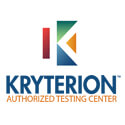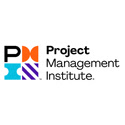Security Fundamentals (98-367)
About This Course
Microsoft’s Security Fundamentals course is apt for professionals, who wish to validate their expert network and computer security skills and kick start a career in the IT landscape. Needless to say, Microsoft certifications on the other hand address a broad range of basic and advance level technical concepts, principles and validate a professional’s core technical expertise whilst improving his/her technical credibility.
Microsoft’s Security Fundamentals course teaches foundational yet extensive knowledge and skills of several technologies and practices when securing networks, workstations and servers. The course helps you understand and learn key security functionalities and concepts to help you implement security infrastructures. Most importantly, Security Fundamentals certification course prepares you for the 98-367 MTA examination.
Simply put, the course helps you a solid foundational knowledge pertaining to security software, network security, operating system (OS) security and security layers.
Who Should Attend This Course
Apt for anyone who wants to understand more about computer/network security and/or prepare for Microsoft’s Certification Exam.
Why This Course
The certification program is designed to prepare professionals for MTA certification and improve one’s technical knowledge pertaining to security layers, network security and OS security. Most importantly, the candidates will get to learn about the principles behind layered security and basic principles of MTA security.
You learn to:
- Secure networks
- Build security layers
- Secure operating systems
- Secure clients and servers
- Manage security software
Course Objectives
- Understand security layers. The course teaches professionals to execute and use a range of security layers.
- Learn about authentication, accounting and authorization.
- Understand security protocols. Learn about security mechanisms and ways to prevent unauthorized access.
- Learn about network security. Learn to secure firewalls along with wireless networks, protocols and network access protection.
- Learn to protect software, client and servers.
Course Prerequisites
Basic knowledge of network and computing concepts.
Course Benefits
Following are the benefits of enrolling for the Security Fundamentals:
- Strengthens one’s fundamentals in computer and network security
- Prepares for the industry approved MTA exam
- Build and learn about security layers
- OS security
- Security policies
- Network security
- Server and client protection
- Security software





























